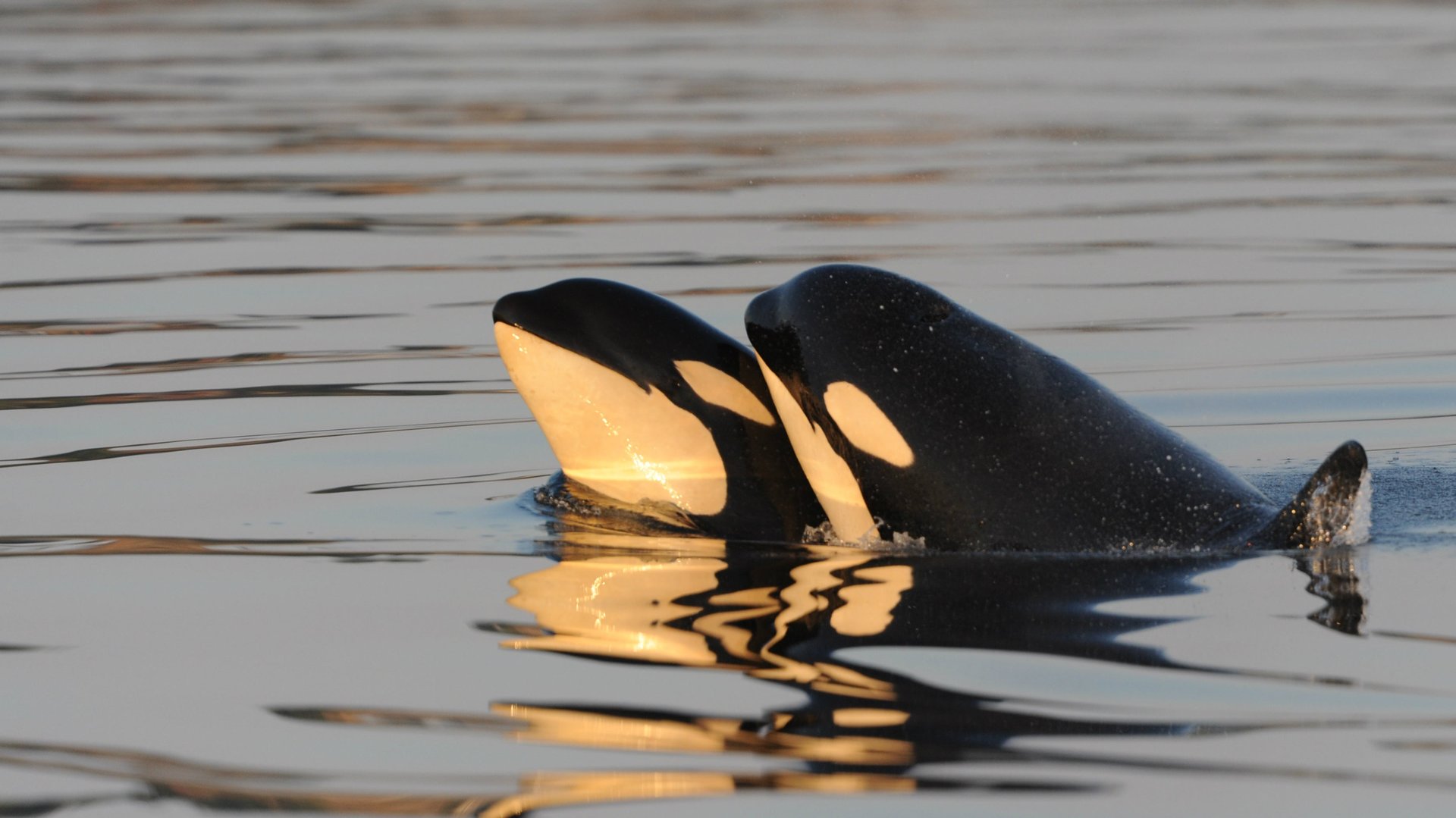Scientists have a new theory about why female orcas live so long after they stop having babies
Almost all female animals breed until they die. This makes sense: the longer you can procreate, the more likely you are to pass on your genes.


Almost all female animals breed until they die. This makes sense: the longer you can procreate, the more likely you are to pass on your genes.
There are, however, a few exceptions to the rule. Humans, short-finned pilot whales and orcas all go through menopause. A persistent mystery of human evolution is why women continue to live long after they are capable of giving birth. Similarly, scientists have long puzzled over why killer whales stop reproducing in their 30s and 40s yet—in the words of Destiny’s Child—keep on surviving, often for several decades. A new study published in Current Biology can help shed light on female orcas’ unusual reproductive timelines.
First, a bit of background on the lifespans of killer whales. The National Oceanic and Atmospheric Administration estimates that female orcas in the wild live between 50 and 100 years. Granny, the oldest killer whale ever recorded, was estimated to be more than 100 years old when she went missing late last year. (Scientists say she is presumed dead.) At the time, she was still leading her clan.
Granny and other killer whale females’ long lives are likely related to their matrilineal clan structure. Clans include all of the matriarch’s offspring, plus the next generation of offspring as well. Thanks to underwater cameras, we now know that matriarchs share the fish they’ve caught with their grand-calves, which live for years before they can feed themselves. In this way, a matriarch’s longevity allows her to use her knowledge and hunting skills to increase her family’s chances of survival.
But a clan has limited time and attention to invest in feeding and protecting its young. The researchers behind the new study in Current Biology found that, when a grandmother gives birth at the same time as one of her daughters, the two new mothers wind up competing against each other for those limited resources—what scientists call “reproductive conflict.” The study, which was based on 43 years of data, shows that when females from different generations reproduce at the same time, the older mother’s calf is 1.7 times likelier to die than the offspring of the younger mother.
“It’s easy to think that an older female will pass on their genes better by continuing to give birth in late life,” says Daniel Franks, biology professor at the University of York and a co-author of the study. “But our new work shows that if an old female killer whale reproduces, her late-life offspring suffer from being out-competed by her grandchildren.”
Past research by two of the study’s co-authors—Mike Cant, of the University of Exeter, and Rufus Johnstone, from the University of Cambridge—had used mathematical models to predict that competition between orca mothers and daughters might explain menopause. However, the new study is the first to test this hypothesis in the wild.
“The paper makes an interesting case that at some point, an old female will probably do more to promote her own genes into [future] generations by provisioning her grandkids than by having a calf of her own,” says Volker Deecke, a conservation biologist at the University of Cumbria specializing in killer whales who was not affiliated with the study. In that sense, he says, intergenerational competition also highlights the advantages of their unusual matrilineal structure, in which all of a matriarch’s adult offspring live with her. (Males mate with whales from other pods, and then return to their original clans.) When it comes to killer whales, the best grandmas are the ones that feed the most—not breed the most.